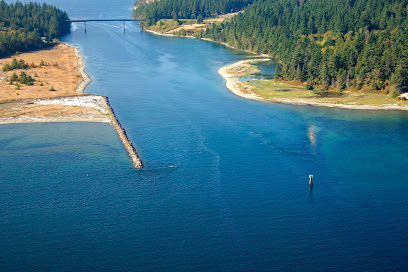I follow the Facebook group History of Puget Sound and Arounds whose followers post common and sometimes less known PNW history photos.
In November 2019, group admin shared a post from another FB group showing this postcard from the early 20th century showing 'Puget Sound Indians' on the beach after fishing.
Group members felt the location was Blake Island, across from Seattle.
Right off, I knew it was Waadah Island, which borders Neah Bay. I've surfed around Neah Bay for years so know the area well.
When you enter Neah Bay, you can view Waadah Island as you just arrive in town. The island was connected to the shoreline at some point thus protecting the bay and its fishing fleet from ocean swell.
Below is the postcard and post from the history group.
Further below are images I found showing the island in different eras including (middle) the image from the book "The Sea is My Country."





















